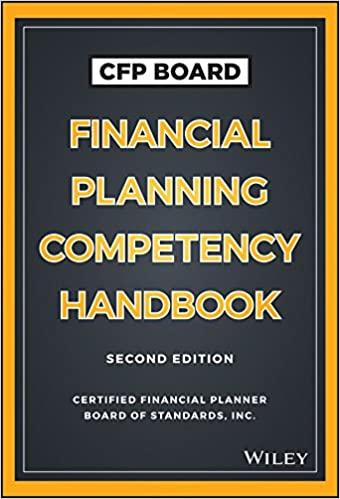As a financial advisor at RedHat International (RHI), you have been asked to evaluate two capital investment alternatives submitted by the shipping department. Before beginning
As a financial advisor at RedHat International (RHI), you have been asked to evaluate two capital investment alternatives submitted by the shipping department. Before beginning your analysis, you note that company policy has set the minimum desired rate of return at 16% for all proposed projects. You also learn that the corporate tax rate is 22%.
The proposed capital project calls for the shipping department to fully automate a warehouse using one of two different advanced robotics systems. System A will incur development costs of $2,400,000. System B will cost $3,800,000 to develop. Both systems will be capitalized and amortized using a CCA rate of 20%. In addition, the firm believes that Net Working Capital will rise by $40,000 at time zero and then by an additional $10,000 at the end of each year for each year that the new system is operating (except at the end of the final year of the project). This applies to both alternatives. However, all of the increase in Net Working Capital will be recovered at the end of the project.
The Shipping Department intends to hire an outside consultant at a cost of $10,000 to help it choose which of the two alternatives would be most effective. If neither alternative is financially attractive, the consultant will be expected to point this out to the company. The amount paid to the consultant will be expensed at the time it is incurred.
To recover a portion of the development cost, the shipping department intends to charge the manufacturing department for the use of computer time at the rate of $150 per hour for 60 hours per year for each year of the project. This amount will remain the same under either alternative. RHI owns all of its computer equipment, which has significant spare capacity. The company plans to maintain this spare capacity into the future. However, it is company policy not to rent spare computer capacity to outside users due to security concerns.
If the new automated robotics system is put into use, the pre-tax cost savings each year are estimated as follows:
| Year | System A | System B |
| 1 | $1,400,000 | $2,000,000 |
| 2 | $1,200,000 | $1,650,000 |
| 3 | $1,100,000 | $1,450,000 |
| 4 | $ 975,000 | $1,200,000 |
| 5 | $ 950,000 | $1,100,000 |
Figure 1
As the capital budgeting analyst, you are required to draft a comprehensive memo, addressed to: The Manager, Shipping Department, answering the following questions:
- How should you handle the $10,000 payment to the Consultant? Why? Be specific.
- How should you handle the $150 per hour charge for computer time charged by the shipping department to the production department? Why? Be specific.
- What discount rate should you use? Why?
- Calculate the NPV of each alternative using the six steps of capital budgeting and the cost savings shown in Figure 1 above. For Question #4, assume that there is no salvage value. At this stage of the analysis, we are assuming that at the end of the equipments five-year life, it will be scrapped for zero value.
- In Question #5, the CFO is concerned that a change in technology might make the new system obsolete after three years. If this occurs and you only obtain three years of cost savings (as per Figure 1 above) and no salvage value, which alternative (if any), would you now recommend?
- In Question #6, the vendors of both systems have indicated that they are working on a new generation of robotics which they expect will totally eliminate the function of the current generation of equipment. If they are able to do this, they would be willing to repurchase the current systems for the following amounts:
|
| System A | System B |
| End of Year 3 | $600,000 | $600,000 |
| End of Year 4 | $300,000 | $300,000 |
| End of Year 5 | 0 | 0 |
Cost savings for the years the systems are in use will remain as shown in Figure 1 above and the impact on Net Working Capital will remain as stated up to the point that the equipment is withdrawn from service (with all working capital recovered at the end of the last year of service). If the vendors do manage to develop the new generation of equipment, should the shipping department purchase the current generation and then sell back to the manufacturer when the new systems are released? If so, what would be the optimal year to salvage the equipment? Be specific
A body of the report that shows the complete solution to each of the problems, including a Summary Table at the end of each of Questions 4, 5 & 6
Step by Step Solution
There are 3 Steps involved in it
Step: 1

See step-by-step solutions with expert insights and AI powered tools for academic success
Step: 2

Step: 3

Ace Your Homework with AI
Get the answers you need in no time with our AI-driven, step-by-step assistance
Get Started


